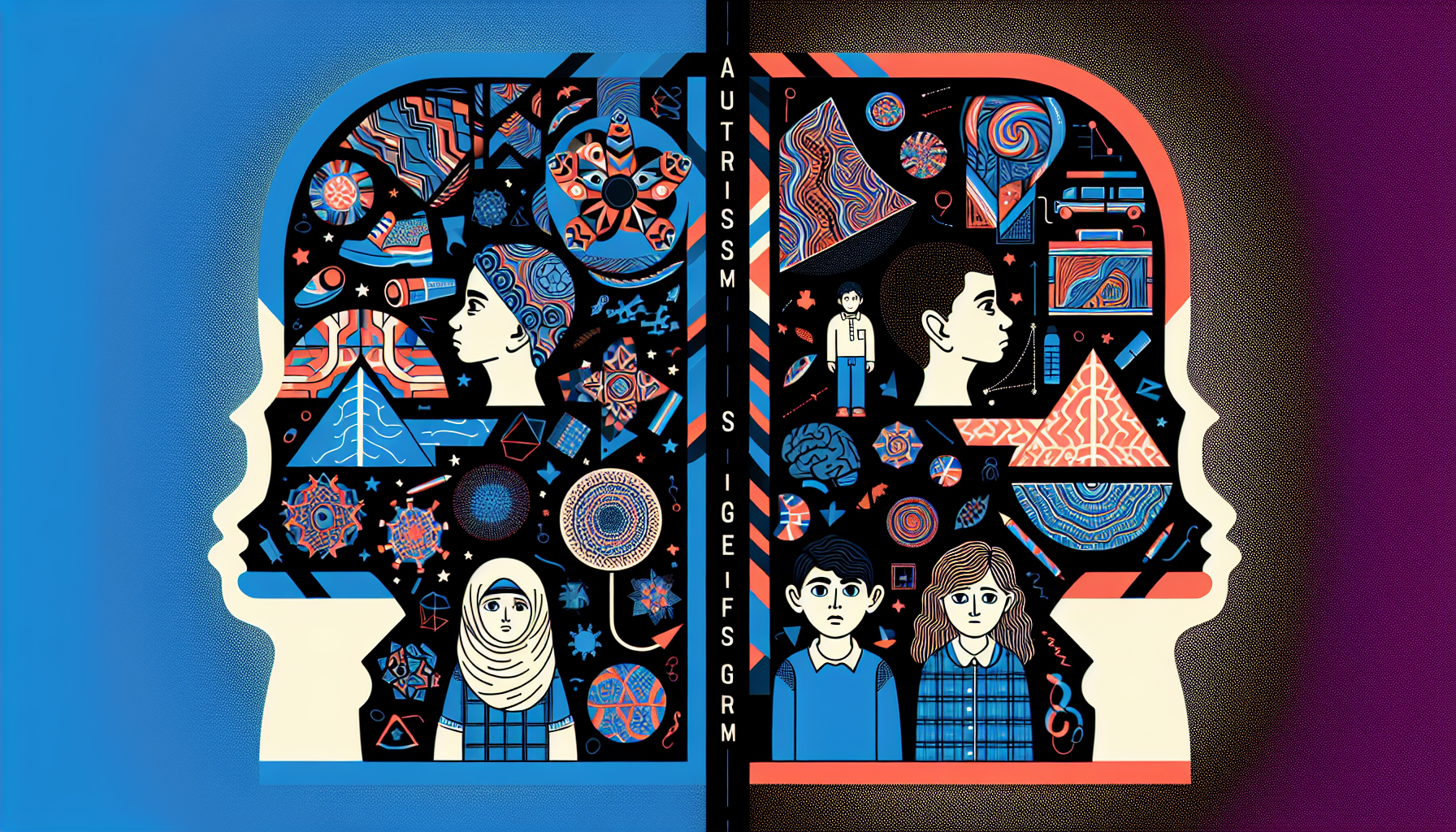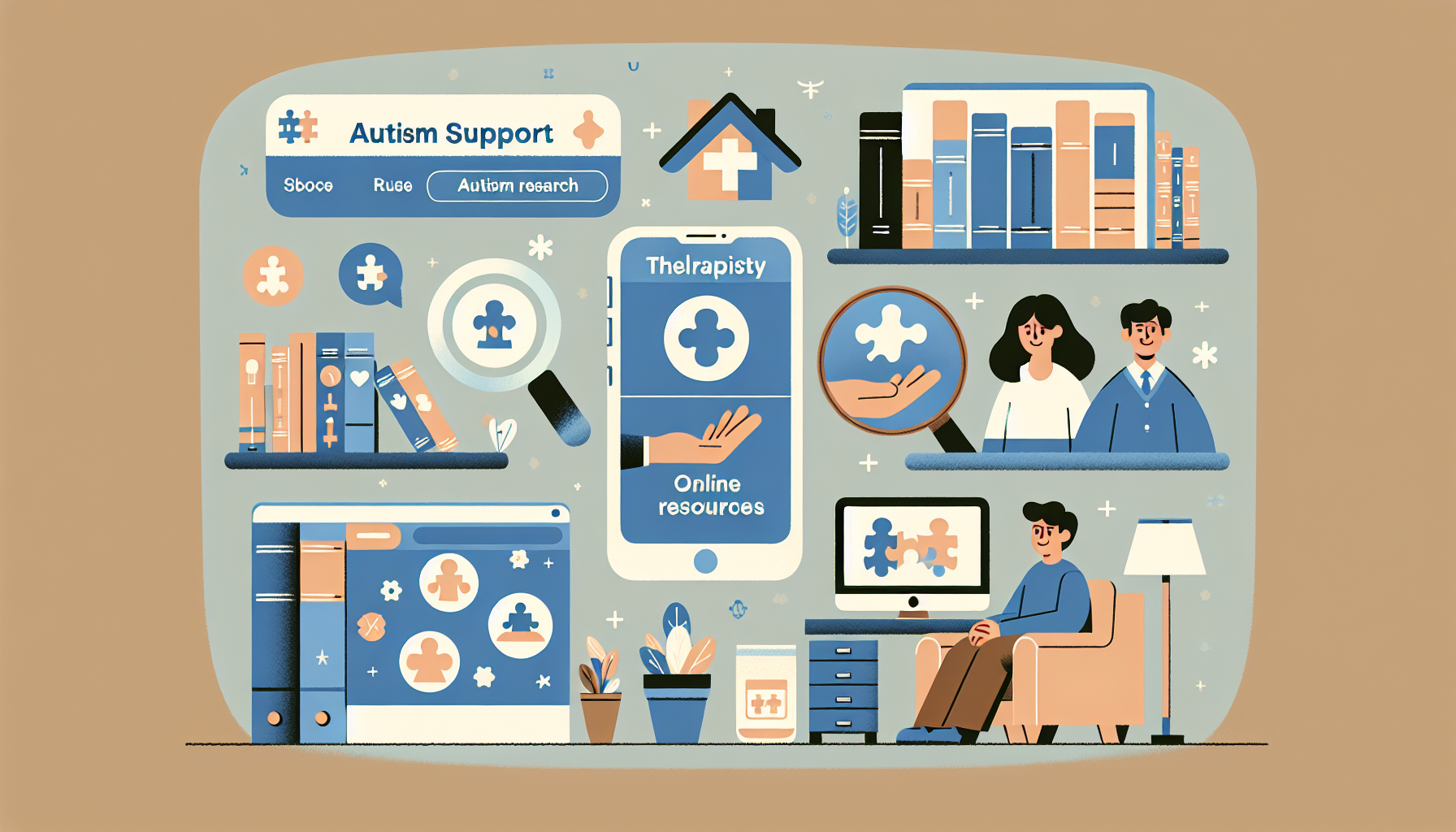The Influence of Autism on Learning
Discover the ways autism can impact learning. From sensory sensitivities to executive functioning, gain insights for effective support.

Understanding Autism and Learning
Autism is a neurodevelopmental disorder that can have a significant impact on learning. It is crucial to understand the unique challenges individuals with autism face in order to provide effective support. In this section, we will provide an overview of autism and explore the importance of learning for individuals on the autism spectrum.
Overview of Autism
Autism, also known as Autism Spectrum Disorder (ASD), is a complex condition that affects social interaction, communication, and behavior. It is characterized by a wide range of symptoms and varying degrees of impairment. Some common features of autism include difficulties in social interactions, repetitive behaviors, and sensory sensitivities.
Individuals with autism often have unique strengths and challenges that can influence their learning experiences. It is important to recognize that autism is a spectrum disorder, meaning that the characteristics and severity of symptoms can vary widely from person to person.
Importance of Learning
Learning is a fundamental aspect of human development, and it plays a crucial role in the lives of individuals with autism. Education provides opportunities for acquiring knowledge, building skills, and fostering independence. It allows individuals with autism to reach their full potential and participate more fully in society.
For individuals with autism, learning can be particularly challenging due to the various factors associated with the condition. Sensory sensitivities, communication difficulties, cognitive inflexibility, and executive functioning deficits can all impact the learning process. However, with appropriate support and accommodations, individuals with autism can overcome these barriers and thrive in educational settings.
Understanding the unique learning profile of individuals with autism is essential for educators, parents, and caregivers. By recognizing and addressing the specific needs and challenges of individuals on the autism spectrum, we can create inclusive learning environments that promote growth, development, and success.
In the following sections, we will delve into specific areas that can be affected by autism and explore strategies to support individuals with autism in their learning journey. By gaining a deeper understanding of the impact of autism on learning, we can break down barriers and create opportunities for individuals with autism to reach their full potential.
Sensory Sensitivities
Individuals with autism often experience sensory sensitivities that can significantly impact their learning environment. These sensitivities can manifest in various ways and may affect their ability to process and respond to sensory stimuli. It is important to understand these sensitivities and implement strategies to provide appropriate support.
Impact on Learning Environment
For individuals with autism, the learning environment can be overwhelming due to sensory sensitivities. They may be hypersensitive or hyposensitive to certain stimuli, such as noise, bright lights, textures, or smells. These sensitivities can lead to difficulties in focusing, processing information, and maintaining attention in a typical classroom setting.
The impact of sensory sensitivities on learning can vary from person to person. Hypersensitivity to noise, for example, may make it challenging to concentrate on verbal instructions or engage in group discussions. On the other hand, hyposensitivity to touch or proprioception may result in difficulties with fine motor tasks or spatial awareness.
Addressing these challenges requires creating a learning environment that considers and accommodates sensory sensitivities. This may involve minimizing distractions, providing a quiet area for breaks, adjusting lighting, and using visual supports to enhance understanding. By reducing sensory overload, individuals with autism can better focus on their learning and effectively engage with educational materials.
Strategies for Support
To support individuals with autism in managing their sensory sensitivities, various strategies can be implemented. These strategies aim to create a more inclusive and comfortable learning environment. Some effective approaches include:
- Sensory Breaks: Allowing scheduled breaks or providing a designated sensory space where individuals can relax and self-regulate their sensory input.
- Visual Supports: Using visual aids, such as schedules, visual cues, or social stories, to enhance comprehension, reduce anxiety, and provide predictability.
- Flexible Seating: Offering alternative seating options, like stability balls or standing desks, to accommodate different sensory needs and promote focus and engagement.
- Noise Reduction: Implementing noise-cancelling headphones or providing quiet areas to minimize auditory distractions and support concentration.
- Multi-Sensory Approaches: Incorporating multi-sensory teaching techniques, such as using manipulatives, visual aids, and hands-on activities, to enhance learning and engagement.
- Individualized Education Plans (IEPs): Collaborating with educators, therapists, and parents to develop personalized plans that address specific sensory sensitivities and outline appropriate accommodations and strategies.
By implementing these strategies and creating a supportive learning environment, individuals with autism can have a more positive educational experience. It is essential to recognize and respect their sensory sensitivities, providing them with the tools and resources they need to thrive academically while embracing their unique strengths and learning styles.
Communication Challenges
Individuals with autism often face unique communication challenges that can impact their learning experiences. These challenges can manifest in both verbal and nonverbal communication, as well as difficulties in social interaction.
Verbal and Nonverbal Communication
Verbal communication difficulties are commonly associated with autism. Some individuals may struggle with expressive language skills, finding it challenging to articulate their thoughts and ideas. They may have difficulty with word retrieval, sentence structure, or maintaining a conversation. It's important to provide patience and support, allowing individuals with autism to express themselves at their own pace.
Nonverbal communication can also be affected by autism. Individuals may have difficulty understanding or using nonverbal cues such as facial expressions, body language, and gestures. This can make it challenging to interpret the intentions or emotions of others. It's important to provide clear and explicit communication, using verbal cues and visual supports to enhance understanding.
Social Interaction Difficulties
Autism can also present challenges in social interactions. Individuals with autism may struggle with understanding social norms, reading social cues, and initiating or maintaining conversations. They may find it difficult to navigate social situations, leading to feelings of isolation or exclusion.
Supporting individuals with autism in social interactions can involve providing explicit instruction on social skills, such as turn-taking, active listening, and perspective-taking. Visual supports, social stories, and role-playing activities can also be helpful tools in developing social skills and fostering meaningful connections with others.
By recognizing and addressing the communication challenges associated with autism, educators, parents, and caregivers can create a supportive learning environment that promotes effective communication and social interaction. Taking an individualized approach and providing appropriate accommodations can help individuals with autism thrive in their educational journey.
Cognitive Flexibility
Individuals with autism may experience challenges with cognitive flexibility, which can have an impact on their learning processes. This section explores the rigidity in thinking often associated with autism and strategies for adapting learning approaches to accommodate these challenges.
Rigidity in Thinking
Rigidity in thinking is a common trait observed in individuals with autism. They may have difficulty shifting their focus, thoughts, or behaviors from one task or topic to another. This inflexibility can hinder their ability to adapt to new situations or changes in learning environments.
For example, a student with autism may struggle with transitioning from one subject to another during the school day. They may become fixated on a specific topic and have difficulty shifting their attention or engaging in different learning activities. This rigidity in thinking can limit their ability to explore a broader range of subjects and acquire new knowledge.
Adapting Learning Approaches
To support individuals with autism in their learning journey, it is crucial to adapt learning approaches that promote cognitive flexibility. Here are some strategies that can be implemented:
- Visual Supports: Visual aids such as schedules, visual timetables, and visual cues can help individuals with autism understand and anticipate changes in their learning environment. These visual supports provide a clear and structured representation of the day's activities, enabling them to mentally prepare for transitions and shifts in focus.
- Explicit Instruction: Providing clear and explicit instructions can help individuals with autism understand expectations and navigate learning tasks. Breaking down complex concepts into smaller, manageable steps can facilitate their understanding and promote flexibility in their thinking.
- Gradual Transitions: Gradually transitioning between tasks or subjects can help individuals with autism adjust more smoothly. Providing a warning or using a countdown system can give them time to mentally prepare for the upcoming change and reduce anxiety associated with sudden shifts.
- Visual Reminders: Visual reminders, such as visual prompts or checklists, can help individuals with autism stay on track and remember the steps or rules associated with a particular learning task. These visual reminders serve as external cues to help them flexibly adapt their thinking and actions.
- Flexible Groupings: When working in group settings, considering flexible groupings can be beneficial for individuals with autism. Allowing them to work in pairs or small groups with peers who understand their needs can provide a supportive and inclusive learning environment. This flexibility in groupings can foster collaboration and enhance their cognitive flexibility.
By implementing these strategies, educators and caregivers can create an environment that supports cognitive flexibility in individuals with autism. These adaptations help individuals with autism navigate transitions, embrace new concepts, and engage in learning experiences that promote their overall growth and development.
Executive Functioning
Individuals with autism often face challenges related to executive functioning, which can impact their ability to learn and navigate various tasks. Executive functioning refers to a set of cognitive processes involved in planning, organizing, and managing time effectively.
Organization and Planning
One area of executive functioning affected by autism is organization and planning. Individuals on the autism spectrum may struggle with organizing their thoughts, materials, and tasks. This can make it difficult for them to prioritize and break down larger tasks into manageable steps.
To support individuals with autism in developing organization and planning skills, implementing visual aids and structured routines can be beneficial. Visual schedules, checklists, and color-coded systems can help individuals stay organized and understand the sequence of tasks. Breaking down complex assignments into smaller, actionable steps can also provide clarity and reduce overwhelm.
Time Management Skills
Time management is another aspect of executive functioning that can be challenging for individuals with autism. Difficulties in estimating time, transitioning between activities, and understanding deadlines can impact their learning experience.
To help individuals with autism develop time management skills, it can be helpful to incorporate visual timers and schedules. Visual timers provide a concrete representation of time passing and can assist in managing transitions between activities. Breaking tasks into smaller, time-bound segments can also aid in managing time effectively. Additionally, providing clear and consistent expectations about deadlines and due dates can assist in developing a sense of time awareness.
By addressing the challenges related to organization, planning, and time management, individuals with autism can enhance their learning experience and improve their overall academic performance. Creating supportive environments and implementing strategies tailored to their needs can empower them to navigate learning tasks with greater confidence and success.
Special Interests and Strengths
Individuals with autism often have unique special interests and strengths that can be harnessed to enhance their learning experiences. Understanding and utilizing these interests and strengths can greatly contribute to their educational success.
Utilizing Interests in Learning
One way to engage individuals with autism in the learning process is by incorporating their special interests into educational activities. These interests can serve as powerful motivators, capturing their attention and increasing their overall engagement. By tapping into their passions, educators can create a more meaningful and enjoyable learning environment.
For example, if a student has a keen interest in dinosaurs, a teacher can design a science lesson that revolves around dinosaurs. This approach allows the student to connect with the material on a personal level, making the learning experience more relatable and memorable. Incorporating special interests into learning also helps to foster a sense of ownership and enthusiasm in individuals with autism.
Building on Strengths for Success
In addition to special interests, individuals with autism often possess unique strengths that can be leveraged to support their learning. These strengths may include exceptional attention to detail, strong visual thinking abilities, or advanced problem-solving skills. Recognizing and building on these strengths can enhance their educational outcomes.
For instance, if a student excels in visual thinking, educators can provide visual aids, such as diagrams, charts, or videos, to facilitate their understanding of complex concepts. By capitalizing on their strengths, individuals with autism can better comprehend and retain information.
Moreover, strengths like attention to detail and problem-solving abilities can be honed to maximize learning potential. Assigning tasks that require attention to detail or critical thinking can help individuals with autism develop these skills further, fostering a sense of accomplishment and boosting their confidence.
By embracing and incorporating special interests and strengths into the learning process, educators can create inclusive and empowering environments for individuals with autism. This approach not only enhances their learning experiences but also nurtures their unique talents and abilities.
References
- https://www.autism-society.org/what-is/
- https://www.cdc.gov/ncbddd/autism/facts.html
- https://www.understood.org/en/articles/sensory-processing-issues-explained
- https://www.iidc.indiana.edu/irca/articles/supporting-communication-in-the-classroom.html
- https://childmind.org/article/helping-kids-who-struggle-with-executive-functions/
- https://www.spectrumnews.org/opinion/viewpoint/turning-special-interests-into-careers/


























.jpeg)









































































